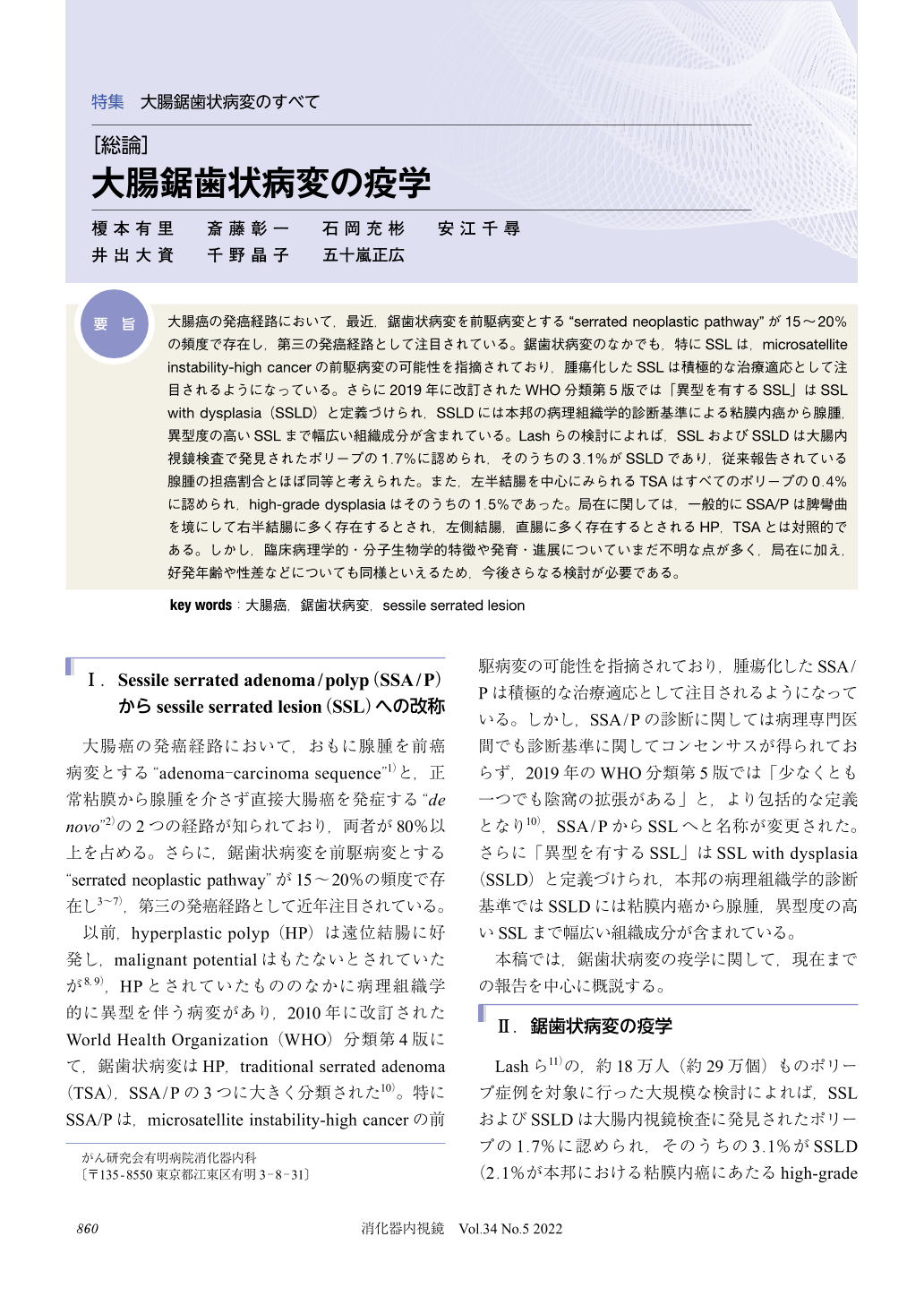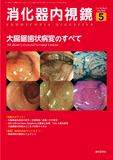Japanese
English
- 有料閲覧
- Abstract 文献概要
- 1ページ目 Look Inside
- 参考文献 Reference
要 旨
大腸癌の発癌経路において,最近,鋸歯状病変を前駆病変とする “serrated neoplastic pathway” が15~20%の頻度で存在し,第三の発癌経路として注目されている。鋸歯状病変のなかでも,特にSSLは,microsatellite instability-high cancerの前駆病変の可能性を指摘されており,腫瘍化したSSLは積極的な治療適応として注目されるようになっている。さらに2019年に改訂されたWHO分類第5版では「異型を有するSSL」はSSL with dysplasia(SSLD)と定義づけられ,SSLDには本邦の病理組織学的診断基準による粘膜内癌から腺腫,異型度の高いSSLまで幅広い組織成分が含まれている。Lashらの検討によれば,SSLおよびSSLDは大腸内視鏡検査で発見されたポリープの1.7%に認められ,そのうちの3.1%がSSLDであり,従来報告されている腺腫の担癌割合とほぼ同等と考えられた。また,左半結腸を中心にみられるTSAはすべてのポリープの0.4%に認められ,high-grade dysplasiaはそのうちの1.5%であった。局在に関しては,一般的にSSA/Pは脾彎曲を境にして右半結腸に多く存在するとされ,左側結腸,直腸に多く存在するとされるHP,TSAとは対照的である。しかし,臨床病理学的・分子生物学的特徴や発育・進展についていまだ不明な点が多く,局在に加え,好発年齢や性差などについても同様といえるため,今後さらなる検討が必要である。
The “serrated neoplastic pathway”, which is a precursor lesion of serrated lesions, has recently been identified as a third carcinogenic pathway in colorectal carcinogenesis with a frequency of 15-20%. Among serrated lesions, sessile serrated lesions (SSL) in particular have been pointed out as a possible precursor of microsatellite instability-high cancer, and tumorigenic SSL is now attracting attention as an indication for aggressive treatment. The “atypical SSL” is called SSL with dysplasia (SSLD), which includes a wide range of components from intramucosal carcinoma to adenoma and highly atypical SSL according to the Japanese histopathological criteria. According to our study, SSL and SSLD were found in 1.7% of polyps detected by colonoscopy, and 3.1% of them were SSLD, which was considered to be almost equivalent to the previously reported percentage of adenoma carcinomas. TSA was found in 0.4% of all polyps and high-grade dysplasia was found in 1.5% of them. In terms of localization, SSA/P is generally considered to be more common in the right hemicolon, bordering the splenic flexure, while HP and TSA are more common in the left colon and rectum, but there are still many unknowns regarding clinicopathological and molecular characteristics and growth development, as well as differences in localization, age at onset and sex. Further studies are expected.

© tokyo-igakusha.co.jp. All right reserved.


